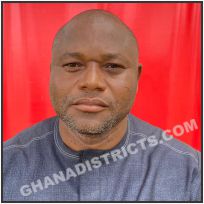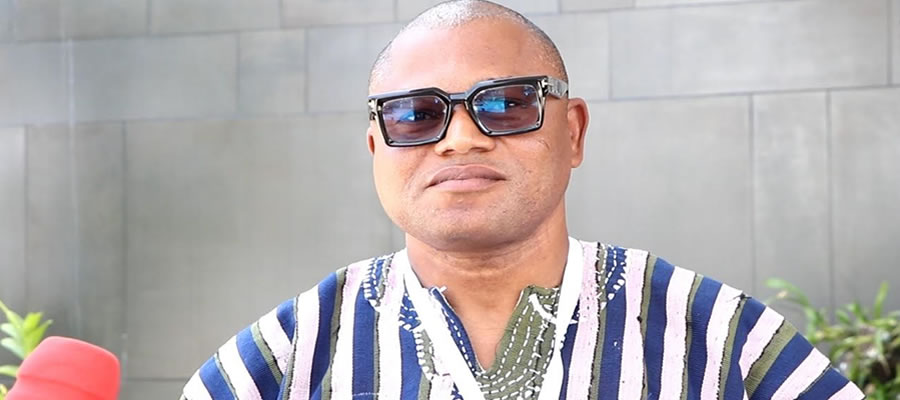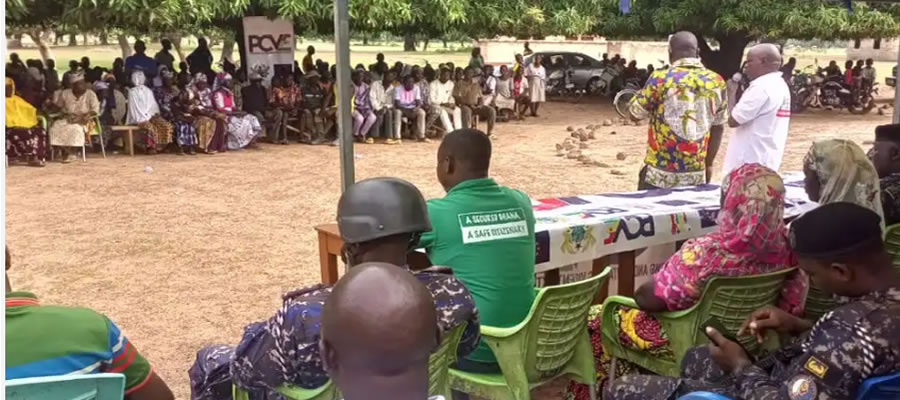

VULNERABILITY ANALYSIS
VULNERABILITY AND EXCLUSION
There are a number of vulnerable and excluded in the District and the District is grappling with the issue of how to take care of them. These include:
- Women
- The aged
- The youth
- Single mothers
- Widows
- Physically challenged – blind, cripple, mentally retarded
- HIV/AIDS patients
These vulnerable and Excluded suffer from discrimination in various forms, inadequate skills, inadequate Funding etc.
Women
More than 52% of the district population are women, but women participation in decision-making was very insignificant in the past. They were among the most vulnerable and lacked skills that could empower them economically. Girl-child education was almost considered a waste of resources.
This wrong perception about women has taken a new dimension with pragmatic policies put in place to integrate them into the mainstream of society. The new Ministry of Gender and Social Protection is doing every possible to promote the interest of the vulnerable in society particularly women and children.
In the Pursuant of this objective the District Assembly in collaboration with relevant stakeholders including PAS-Garu, Community Rehabilitation Programme (CBR) and NGOs have supported and built the capacity of women socially economically and politically in the District. Economically a good number of women groups and individuals across the District have been empowered with entrepreneurial skill training, agro processing machines and financial support to actively engage in small scale economic activities to improve upon the standard of living. The gesture has raised the image of women since they are currently earning incomes and less dependent on their husbands for household needs.
Politically, a number of sensitization workshops have been organized involving so many women in the Nine (9) Area Councils in the District. This is to increase their assertiveness to participate in the local governance of development in the District in order to ensure that their views are represented in the implementation of programmes and projects.
The capacities of women leaders and civic unions have been built through self- empowerment trainings to fight the course of women through public presentations. Women in this direction have been trained in leadership and public speaking skills to enhance their ability to speak against the abuse of women’s rights and their perpetrators.
Women in the District have benefited immensely through the effort of all the development stakeholders. Notwithstanding these achievements a number of women still lack credit facilities to undertake economic ventures while those who have received credit assistance have refused timely repayment. This behaviour has constrained effort of extending similar support and services to other women who badly needs assistance to empower themselves economically.
Children
Out of the current estimated District population of 143,416, 45% falls within the 0-14 age bracket. Since children are the most vulnerable groups in any population there is the need to ensure their proper upbringing.
The Ghana Health Service, District Assembly and NGOs in promoting the welfare of children in the District have supported them in diverse ways. The World Vision International apart from its frequent deworming of school children is currently supporting a number of children in basic education, providing feeding for some Nursery Schools. In addition to this, it also sponsored referral cases and paid medical operation fees for some vulnerable children and women.
The District Assembly in collaboration with the GHS, World Food Programme (WFP) and Ghana Schools Feeding Programme (GSFP) provides supplementary feeding and nutrition education to benefit children between the ages of 2-5years to help prevent malnutrition and under nutrition which is a health problem in the District. The GHS through it outreach programmes support children with food ration including sugar, a blend of corn and Soya beans as well as iodated salt. This amply demonstrates the effort being put in place to reduce nutrient deficiency diseases in children by the GHS and her collaborators.
The National Health Insurance Scheme has also made provision for the absorption of children in the exempted group of claims. For the period 2011 to 2012, a total of 32,333 children age group 0-14 were registered under the Garu-Tempane District Mutual Health Insurance Scheme together with 8 destitutes and 5,327 aged men and women.
Notwithstanding the enormous support from the benevolent organizations, some parents sometimes withdraw their wards from school due to poverty. This is a source of worry and an indictment upon stakeholders in the education sector to increase public awareness on the importance of children education.
Physically Challenged
Attempts by the District to support the vulnerable in society have not neglected the physically challenged. A total of One Hundred and Thirty-Two (132) People With Disabilities (PWDs) have been recorded as beneficiaries of disability fund as from 2011 out of which Sixty-One (61) have hearing Impaired, Fifty (50) are Physically Challenged and Nineteen visually Impaired (19). This group of people has received various forms of financial assistance from World Vision International a Non-Governmental Organization, PAS-Garu, CBR and the District Assembly to undertake agro processing and other small scale economic activities. In collaboration with Garu Presbyterian Community Based Rehabilitation (CBR) Project, the sole implementer of the District Disability Fund and Disability related programmes and Projects the following were undertaken in 2012.
As part of measures taken to intervene at the earlier stage to prevent disabilities, a Multi- disciplinary team screened a total of one thousand six hundred ane thirty-one (1631) children under age five. Out of this number, a total of three hundred and ninty-one (391) children with various impairments and other related conditions. Out of this figure eighty-nine (89) were visual impaired persons, one hundred and seventy (170) were hearing impaired, forty-one (41) were physically challengerd, nineteen (19) were with the psychiatric cases and seventy-two (72) were with communicable diseases. All these were referred for treatment have witnessed various degrees of improvement.
- In collaboration with the Garu Eye clinic, project offered eye treatment to nineteen thousand five hundred and twenty-six (19,526) patients with various conditions such as refractive error, conjunctivitis, corneal ulcer etc.
- Two hundred and twenty-nine (249) eye surgical referrals were made by the Project went through successful operations and their sight restored. These were mainly cataract cases.
- Five hundred and eighty-five (585) children received ear screening within the period. Out of this eighty (80) children identified with problems notably; wax impaction fifty-four (54) and otitis media twenty-six (26) received successful treatment through referrals.
- Two hundred and twenty-two (228) patients received orthopaedic treatment through consultation and reviews in conjunction with the Nsawam orthopaedic mobile team. Thirty-nine (39) orthopaedic surgical cases referred underwent successful operations and their functions restored.
- One hundred and fifteen (115) physically impaired persons received assistive devices to improve mobility. These included twenty-four (24) Tricycles, thirty-nine (39) Calipers/Shoes, thirty-three (33) Wheel Chairs, thirteen (13) crutches and Six (6) artificial limbs.
- The Garu-Tempane District Assembly through the Disability Fund Management Committee (DFMC) supplied fifteen (15) of the above Tricycles whilst World Vision and Lilian Foundation donated 3 and 6 respectively. In addition, of the wheel chairs stated above, the Garu-Tempane Area Development Programme of World Vision had to its credit, a total of 30 which took the form of a donation to support the physically challenged.
- Fifty-three (53) clients received home-based physiotherapy and their functions improved.
- Three hundred and twenty (320) clienteles were trained and supported with improved seed varieties to engage in crop production. Crops cultivated include Soya Bean and Banbaran Bean.
- Six 6 ramps were constructed in some selected schools to enhance physical accessibility to PWDs.
- A total of sixty (60) clients were trained and supported with varieties of tree seedlings namely; mango, guava and cashew for production.
- Three hundred and eighty (380) visually impaired persons were given orientation and mobility training and able to move independently as against 200 in the year’s plan.
- In collaboration with the Garu Presbyterian Agricultural Station and the Ministry of Food and Agriculture, over seven thousand (17,000) poultry birds belonging to PWDs and their families were vaccinated in twenty-nine (29) communities against poultry diseases. Clientele also received technical advice on proper husbandry practices to improve livestock upkeep. This has brought about a reduction in livestock epidemics and increased income levels of clients.
- In collaboration with World Vision, twenty-two (22) PWDs received goats breeding stock for production. This brings to one hundred and seven (107), the total number of PWDs receiving supervision to engage in goats’ production.
- Eighty-three (83) clients received training and vegetable seeds including onion, lettuce, tomatoes, cabbage among others to engage in dry season gardening.
- In collaboration with World Vision, Project enrolled thirty (30) youth with disabilities for vocational skills training to boost their sources of livelihoods.
- Thiry-five (35) PWDs linked to Micro Finance and Small Loans Centre (MASLOC) had access to loans to the tune of GH¢10,432.50 to improve their businesses.
- In addition, 5 groups comprising seventy-five (75) members were trained on credit management and linked to the BESSFA Rural Bank to open saving deposits accounts. These groups will be qualified for loans in the subsequent year. Also, seventeen (17) PWDs received GH¢2,060.00 from the Garu-Tempane District Assembly for skills training and business development.
- Fifteen (15) CWDs enrolled in mainstream schools to pursue formal education within the period. Monitoring was also done on four hundred and sixty (460) older children in regular schools whilst eighty (80) others with profound disabilities received support from the Garu-Tempane District Assembly amounting to GH¢20,919.00 to attend special schools at Gbeogu, Wa, Savelugu, Wenchi, Navrongo etc.
- Twenty (20) CWDs benefitted from remedial classes to improve their academic performance.
This assistance has enabled them to play their roles economically as citizens contributing to the development of the District. However evaluation reports reveal the inadequate entrepreneurial and financial management capacity of these vulnerable groups. This should be a priority in furthering the course of physically challenged the District.
Some Vulnerability Issues
- Youth migration, high incidence of child trafficking and abuse
- Youth unemployment and high teenage pregnancy.
- High incidence of neglect of spouses and children
- Inadequate support for children with disabilities (CWDS) for their education
- Inadequate awareness of the rights of children
- High incidence of Domestic Violence against women and children
- Inadequate representation of persons with disabilities (PWDS) in District assembly and Area Councils.
- Inadequate statistics on vulnerable and excluded
- Weak monitoring of the activities of the vulnerable and excluded
- Inadequate logistics
- Inadequate collaboration between agencies dealing with vulnerable and excluded.
- Lack of employable skills among the Youth especially the vulnerable
Other Interventions to Vulnerability Issues
- The Assembly has over the years use the 2% to address the concerns of People Living With Disabilities. The Department for Social Welfare and the CBR are the lead organisation when it comes to PWDs Activities.
- Four (4) communities were sensitised on the need of packed iodated salt. The communities included Kpatia, Basyonde, Bugri and Woriyanga. The target was mother to mother support groups.
- Post trainings and monitoring visits were made to 15 existing child protection teams (CPTS) communities. The communities are Kugashiegu, Kpatia, Sumaduri, Sadzude, Bantafarugu, Piyalgu, Zeseri and Taukpabi. The target groups were child protection teams.
- Carried out a review training programme for thirty-five (35) child protection teams in 2012.
- In collaboration with Community Based Rehabilitation (CBR), thirty-one (31) wheel chairs were distributed to the disabled.
Community Care Service
A total of 80 children with different disabilities are being sponsored in special school across the country with funding from the disability fund. Many more application for sponsorship are being received and the department is working with the disability committee to see how best to help them. The table below is a breakdown of children with disability in special schools from the Garu -Tempane district according to sex and disability type who are being sponsored with the disability fund.
Payment of Livelihood Empowerment Against Poverty (LEAP)
Some vulnerable Households have been benefiting from LEAP Programme. The department has been able to identify and registered about One Thousand One Hundred and Eighteen (1118) beneficiary households under the emergency LEAP in the district as at December 2011. In the year 2012, the following payments were made to the registered Households under the LEAP programme.
From table 5.10 above it can be observed that a total of Four hundred and Forty Thousand, Eight Hundred Ghana Cedis (440,800.00) was sent out to communities in 2012 to pay LEAD beneficiaries, however, Four Hundred and Twenty Six Thousand, Eight Hundred and Ninety-Six was actually paid because not all beneficiary households were present at the payment dates. A total of Thirteen Thousand, Nine Hundred and Four Ghana Cedis was returned as amount not paid. The district is liaising with relevant stakeholders to increase the number of beneficiary households to support vulnerable and excluded in the district. Below is the list of LEAP communities and the number of beneficiary households in every community.
Ghana School Feeding Programme
The Ghana School Feeding Programme continued to operate in the District. As a result, enrolment figures were reported to have increased and the performance of the pupils improved as indicated in table 11 below. Also nutritional status of children has improved as indicated in table 11 below. The programme has also expanded to cover more schools as per below
This made the total population being fed in the district to increase from 3,800 to 36,308.
National Youth Employment Programme
The National Youth Employment Programme continued the implementation of the rolled out modules of the programme in the district. Registration of fresh applications is ongoing and the major modules being run are as follows:
Births and Deaths Registered For the Period 2010 to April, 2013
Births and death were recored in the between the year 2010 to 2013 and analysed as shown in the tables below.
Date Created : 11/20/2017 7:19:50 AM











 facebook
facebook
 twitter
twitter
 Youtube
Youtube
 +233 593 831 280
+233 593 831 280 0800 430 430
0800 430 430 GPS: GE-231-4383
GPS: GE-231-4383 info@ghanadistricts.com
info@ghanadistricts.com Box GP1044, Accra, Ghana
Box GP1044, Accra, Ghana